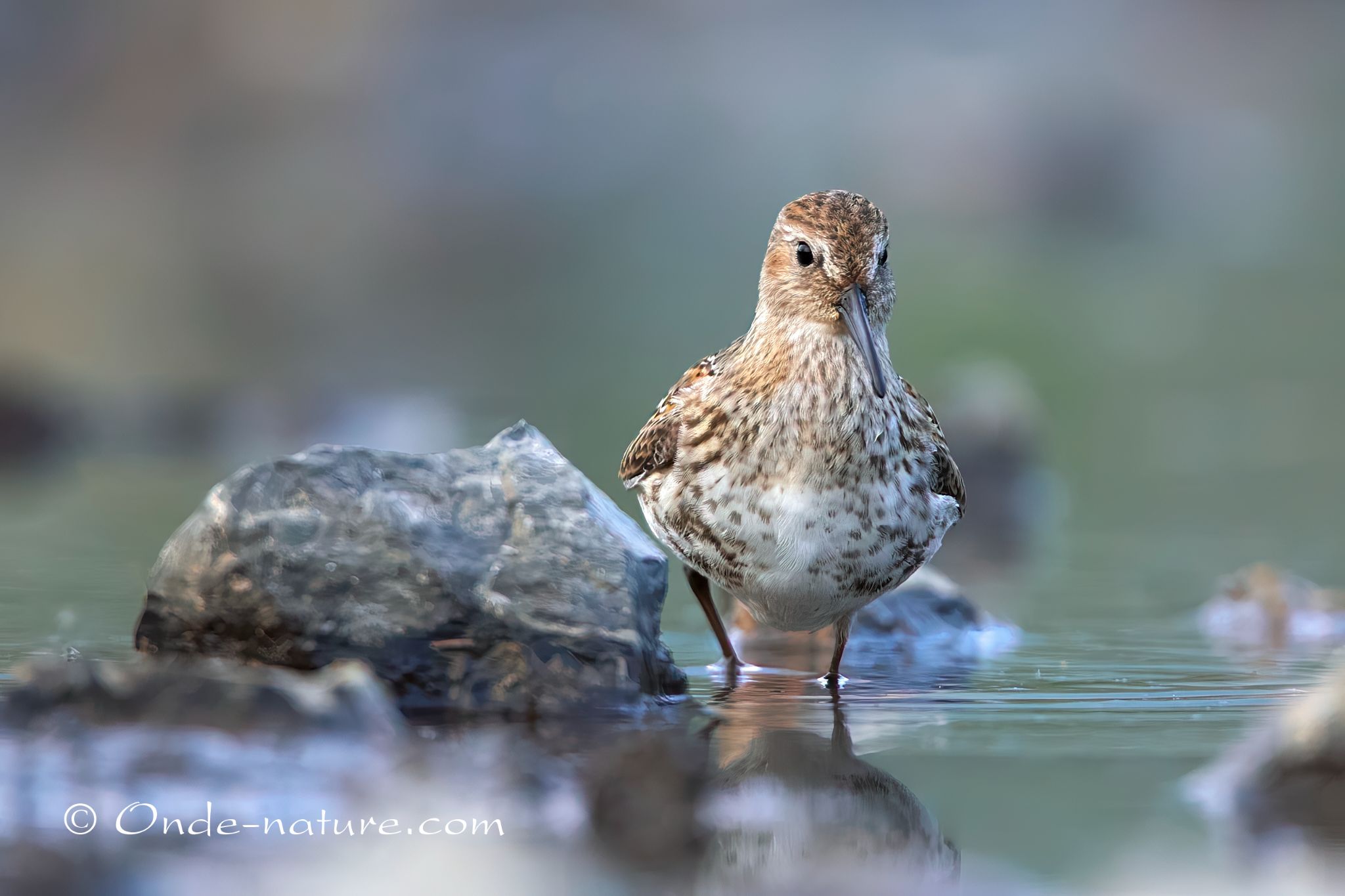The ground pod
A lot of objectivity and a bit of comfort and mobility
In wildlife photography, subjects are fast, elusive, often in motion, relatively small in size, and frequently hidden behind vegetation. In short, very little is under your control.
When photographing small animals on the ground, a spontaneous shot without preparation often results in a top-down view. This angle creates distance and disconnects the viewer from the subject, beyond the fact that it generally lacks aesthetic appeal due to its awkward perspective.
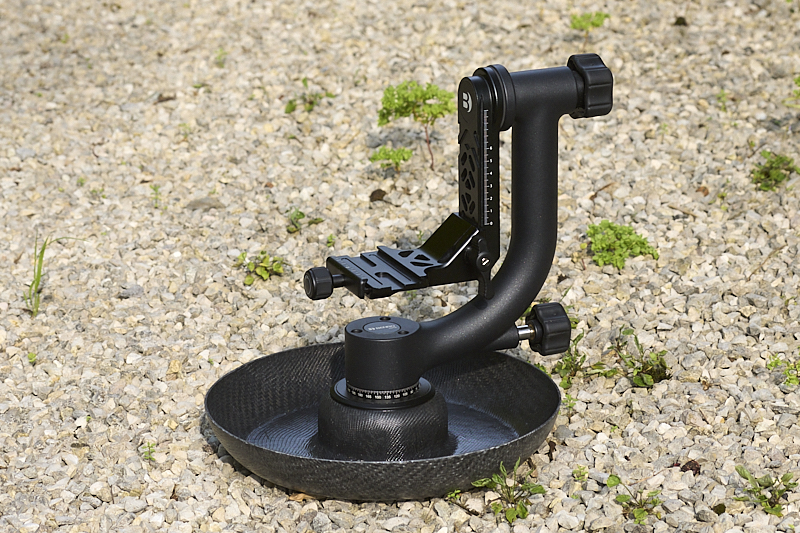 The solution is to position the camera gear very low, about 20 cm above the ground, just high enough to see above surface irregularities or low vegetation. This brings we down to the animal’s eyes level. Shooting from this angle gives images much more power and impact. It enhances the sense of intimacy with the animal. We’re meeting it “at its level.” We’re no longer a distant observer, but rather a participant in contact with the subject. Of course, this often means working while lying flat on the ground.
The solution is to position the camera gear very low, about 20 cm above the ground, just high enough to see above surface irregularities or low vegetation. This brings we down to the animal’s eyes level. Shooting from this angle gives images much more power and impact. It enhances the sense of intimacy with the animal. We’re meeting it “at its level.” We’re no longer a distant observer, but rather a participant in contact with the subject. Of course, this often means working while lying flat on the ground.
Telephoto lenses used in wildlife photography typically weigh between 3 and 5 kilograms, with the camera body adding nearly another kilogram. Handling such weight while lying prone and holding everything at arm’s length is very difficult, and nearly impossible after a few minutes. (It’s worth noting that major manufacturers are now beginning to offer lighter, high-quality equipment). One practical solution is to rest the gear on a support, such as a tripod with its legs spread out horizontally. This works, but in such a setup, the tripod is not easy to move.
This is where the ground pod becomes a valuable tool. It’s essentially a plate-shaped base equipped with a central mount that can hold a ball head or a gimbal to support the camera. The pod’s circular shape, with raised and rounded edges, allows the photographer to slide it in any direction, over 10 to 15 meters if needed, while remaining in a prone position, all in search of the best shooting angle.
The following model is homemade, vacuum-laminated using carbon fiber and epoxy resin, and fitted with an aluminum screw mount for the gimbal. It weighs just 360 grams, significantly less than a tripod. Alternative, simpler DIY versions are also possible.
When photographing small animals on the ground, a spontaneous shot without preparation often results in a top-down view. This angle creates distance and disconnects the viewer from the subject, beyond the fact that it generally lacks aesthetic appeal due to its awkward perspective.

Telephoto lenses used in wildlife photography typically weigh between 3 and 5 kilograms, with the camera body adding nearly another kilogram. Handling such weight while lying prone and holding everything at arm’s length is very difficult, and nearly impossible after a few minutes. (It’s worth noting that major manufacturers are now beginning to offer lighter, high-quality equipment). One practical solution is to rest the gear on a support, such as a tripod with its legs spread out horizontally. This works, but in such a setup, the tripod is not easy to move.
This is where the ground pod becomes a valuable tool. It’s essentially a plate-shaped base equipped with a central mount that can hold a ball head or a gimbal to support the camera. The pod’s circular shape, with raised and rounded edges, allows the photographer to slide it in any direction, over 10 to 15 meters if needed, while remaining in a prone position, all in search of the best shooting angle.
The following model is homemade, vacuum-laminated using carbon fiber and epoxy resin, and fitted with an aluminum screw mount for the gimbal. It weighs just 360 grams, significantly less than a tripod. Alternative, simpler DIY versions are also possible.
Brief construction summary
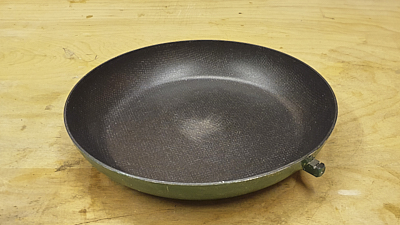
The mold and Its preparation
The fiber layers are laminated in a mold that is nothing more than a simple frying pan. The mold is coated with five layers of release wax or one layer of PVA (polyvinyl alcohol)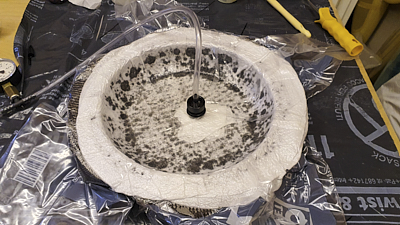
The plate during lamination
The fiber layers are laid in place and the assembly is put under vacuum. The image shows the vacuum bag, the suction hose, and the drainage felt (white). The black areas show spots where the drainage felt is saturated with resin. 
Fabrication of the central support
This is done in the same way, using any available object as a mold. Visible here are the vacuum bag, drainage felt, and suction hose. Carbon fiber is observable at the peripheral zones. 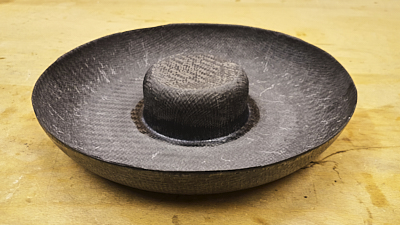
Assembly
The plate and central support are assembled and bonded with epoxy. 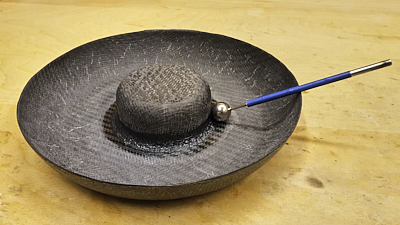
The fillet joint
This is created by mixing the resin with a thixotropic powder additive (which increases viscosity) to prevent the material from collapsing during application. 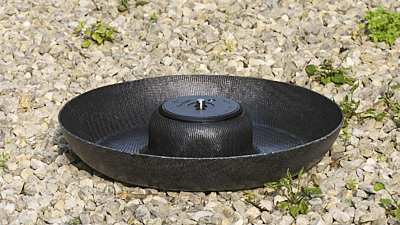
The finished ground pod
At the center of the support, an aluminum screw mount is installed. This component is a tripod base. The total weight is 360g. 
Ground pod with mounted gimbal
The gimbal is screwed in and can easily be removed and mounted on a tripod, for example. Gimbal height may vary depending on the model. 
Ground pod in use
The assembly is both stable and mobile, even on uneven terrain. It can be moved effortlessly by sliding, with the photographer no longer having to carry anything.
Making the effort to give animals the space they rightfully deserve.
Filmed from ground level, these images create an extraordinary sense of closeness. From every possible angle, we find ourselves face to face with the animal.
